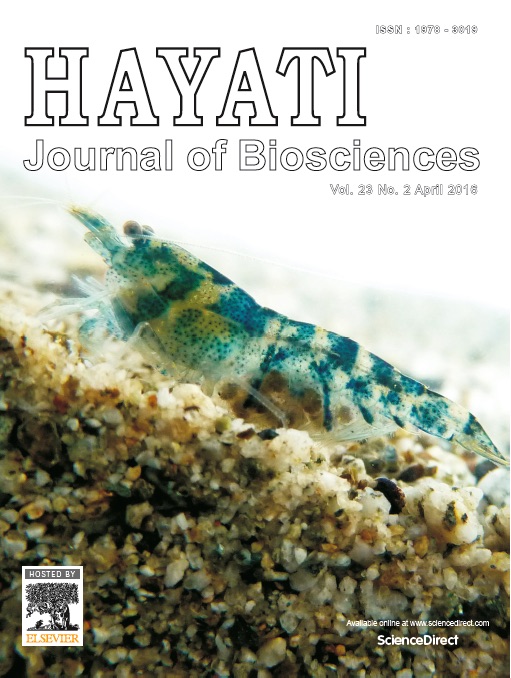Diversity and Abundance of Cerambycid Beetles in the Four Major Land-use Types Found in Jambi Province, Indonesia
Abstract
Longhorn beetles (Coleoptera: Cerambycidae) have an important function in the ecosystem, i.e. bioindicators, saproxylic, pollinators, and as food of other organisms. Land cover changes due to land use can disrupt the natural balance of the ecosystem, which can result in a decrease of cerambycid diversity. Cerambycid species diversity was evaluated in four land types, i.e. jungle-rubber, rubber plantations, oil palm plantations, and felled jungle-rubber. Collections of cerambycid beetles were conducted by using artocarpus trap, made by freshly cut Artocarpus heterophyllus branches. Collections of beetles were made on day 4th, 7th, 10th, 13th, and 16th after the traps were set up. In the four land-use types in Jambi province, we collected 72 species including 34 morphospecies of cerambycids, consisting of 42 species from the jungle-rubber, 39 species from rubber plantations, 16 species from oil palm plantations, and 28 species from felled jungle-rubber. Cerambycid diversity was highest in jungle-rubber (H' = 3.23), followed by rubber plantation (H' = 2.67), felled jungle-rubber (H' = 2.38), and oil palm plantations (H' = 2.01). Highest similarities of cerambycid communities occurred in the rubber plantation–felled jungle-rubber (51.2), followed by jungle-rubber–rubber plantation (50.0), rubber plantations–oil palm plantations (43.5), oil palm plantation–felled jungle-rubber (42.4), jungle-rubber–oil palm plantations (35.3), and jungle-rubber–felled jungle rubber (34.8). The number of cerambycid species and individuals collected was highest on day 7th.Downloads
HAYATI J Biosci is an open access journal and the article's license is CC-BY-NC. This license lets others distribute, remix, tweak, and build upon author's work, as long as they credit the original creation. Authors retain copyright and grant the journal/publisher non exclusive publishing rights with the work simultaneously licensed under a https://creativecommons.org/

























.png) IPB University
IPB University Department of Biology
Department of Biology The Indonesian Biological Society
The Indonesian Biological Society 

